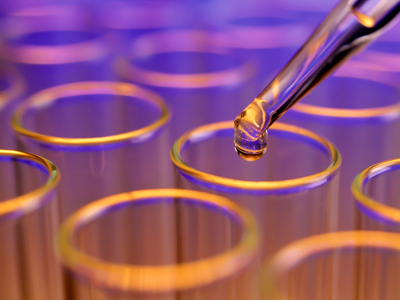
Analysing Substances - Qualitative
In GCSE Chemistry students will look at the various methods and techniques used when analysing substances. In this, the second of three quizzes on the topic, we look at qualitative analysis. This helps us to identify what is present, but does not tell us how much of it there is.
Analysing is the identification of substances by investigating their physical and chemical properties. It is always important to be able to identify unknown substances, particularly in the the food industry and the field of medicine. Many metals are poisonous in large enough amounts and analysis can identify them should they accidentally find their way into the food chain. In cases of actual poisoning, medical staff need to be able to reliably analyse body tissue and blood to find out what is there. Only then can they decide on the correct treatment.
Both magnesium and calcium ions are insoluble in excess sodium hydroxide solution
Ready for more?
not all...
quizzers. Try to win a coveted spot on our Hall of Fame Page.







